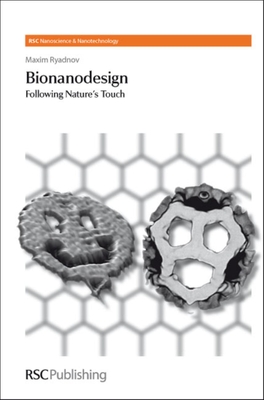The progress of today''s science and technology encounters an increasing demand for finer and more efficiently performing materials with properties superior over those of current and hence ageing devices. Whether this is concerned with electronics or drug delivery, cancer diagnostics or alternative energy sources, the search for means of miniaturizing the existing materials or devising fundamentally new components with higher capacities appears to be relentless. A saving solution to this is widely proposed as the design and fabrication of nanostructures, molecular architectures with dimensions featured below 100 nm. Replicating Nature''s designs faithfully reproduced over millions of years provides perhaps the most straightforward route to success. Nature offers examples of nanodefined self-assemblies in virtually all levels of biological organization. However explicit guidance to the fabrication of functional or specialist nanostructures is of paramount importance.
Nanotechnology is often referred to as building nanoscale structures from bottom up. However, while it is visually clear what is at "up" little is given and understood what is at the "bottom". This new book gives the notion of and provides rules for building nanostructures from basics - the very bottom. The main objective of this publication is to bring together contemporary approaches for designing nanostructures that employ naturally derived self-assembling motifs as synthetic platforms.
The book has been written to satisfy the demands that motivate the search for and principles that prove to help the design of novel nanostructures. The overall goal is to compile the existing understanding of rules that govern biomolecular self-assembly into a practical guide to molecular nanotechnology. It is written in the shape of a review referenced as fully as permissible within the context of biomolecular design, which forms a general trend throughout.
The volume is composed of three core chapters focusing on three prominent topics of applied nanotechnology where the role of nanodesign is predominant. The three key areas from which popular highlights can be drawn are:
-employing the genetic repository, DNA, for creating various geometric nanoscale objects and patterns
-the empirical pursuit of an artificial virus, a magic bullet in gene therapy
-designing artificial extracellular matrices for regenerative medicine
Specific applications that arise from designed nanoscale assemblies as well as fabrication and characterization techniques are of secondary importance and whenever they appear serve as progress and innovation highlights.
The book takes an unconventional approach in delivering material of this kind. It does not lead straight to applications or methods as most nanotechnology works tend to do, but instead it focuses on the initial and primary aspect of "nano" rather than on "technology". Nanodesign is unique in its own field - illustrations are essential and the cohort of brilliant bioinspired designs reported to date form a major part of the publication. In addition, key bibliographic references are covered as fully as possible. A special appendix giving a short list of leading world laboratories engaged in bioinspired nanodesign is also included.
 Jacket, Women
Jacket, Women
 Woolend Jacket
Woolend Jacket
 Western denim
Western denim
 Mini Dresss
Mini Dresss
 Jacket, Women
Jacket, Women
 Woolend Jacket
Woolend Jacket
 Western denim
Western denim
 Mini Dresss
Mini Dresss
 Jacket, Women
Jacket, Women
 Woolend Jacket
Woolend Jacket
 Western denim
Western denim
 Mini Dresss
Mini Dresss
 Jacket, Women
Jacket, Women
 Woolend Jacket
Woolend Jacket
 Western denim
Western denim
 Mini Dresss
Mini Dresss
 Jacket, Women
Jacket, Women
 Woolend Jacket
Woolend Jacket
 Western denim
Western denim
 Mini Dresss
Mini Dresss




